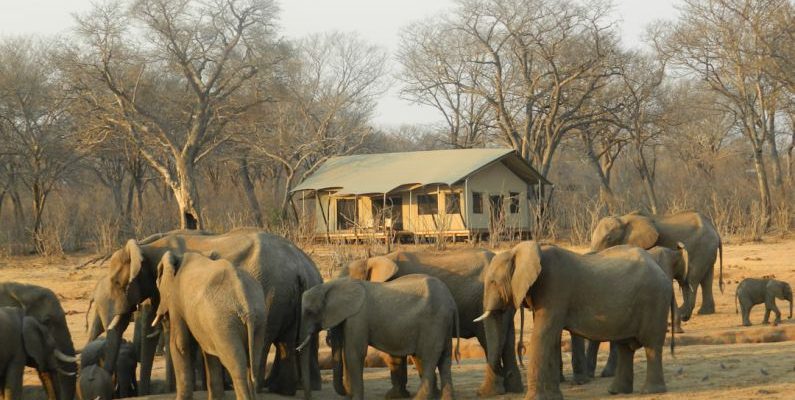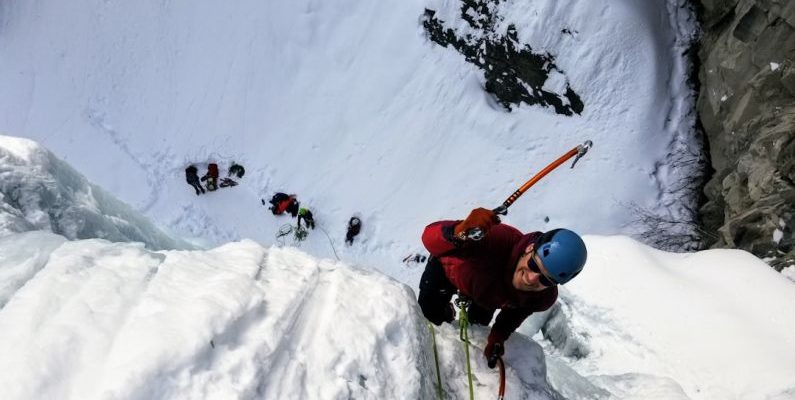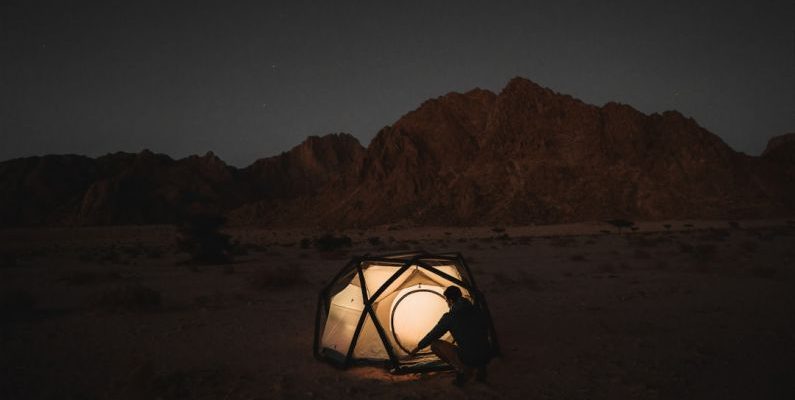Ancient Egypt continues to captivate us with its rich history, fascinating architecture, and intricate art forms. Among the most enigmatic aspects of this civilization are the Egyptian hieroglyphs. These symbolic writings have intrigued scholars and enthusiasts for centuries, offering a window into the mystical beliefs and culture of the ancient Egyptians. The intricate nature of hieroglyphs goes beyond mere language; it delves into the realms of spirituality, symbolism, and the divine. Let us unravel the mysticism of Egyptian hieroglyphs and explore the depths of their significance.
Author: vview
In Eco-Tourism
In today's world, the importance of sustainability and eco-friendliness is more pronounced than ever. This mindset has extended to the travel industry, with many individuals seeking lodging options that align with their environmental values. Fortunately, there are numerous eco-friendly accommodations around the world that not only offer a unique experience but also prioritize environmental conservation. From treehouses nestled in the rainforest to solar-powered yurts in the desert, eco-conscious travelers have a plethora of choices when it comes to sustainable lodging.
Eco-Friendly Treehouses in Costa Rica
Costa Rica is renowned for its lush rainforests and abundant biodiversity, making it an ideal destination for nature lovers. For those seeking a truly immersive experience, eco-friendly treehouses offer a one-of-a-kind stay amidst the treetops. These elevated accommodations are often constructed using sustainable materials and designed to minimize their impact on the surrounding environment. Guests can enjoy panoramic views of the jungle canopy while being surrounded by the sights and sounds of nature. Additionally, many treehouse resorts in Costa Rica prioritize eco-friendly practices such as rainwater harvesting and solar power to minimize their carbon footprint.Off-Grid Yurts in Mongolia
Mongolia, with its vast steppes and rugged landscapes, is home to a unique lodging option for eco-conscious travelers - the yurt. These traditional nomadic tents have been adapted for modern eco-tourism, offering visitors a chance to experience off-grid living in the heart of nature. Yurts are typically powered by solar panels and heated using sustainable wood-burning stoves, allowing guests to enjoy a comfortable stay while minimizing their environmental impact. Staying in a yurt in Mongolia provides a glimpse into the traditional way of life of the nomadic herders while promoting sustainable tourism in the region.Sustainable Safari Camps in Tanzania
For travelers seeking an eco-friendly safari experience, Tanzania's sustainable safari camps offer a perfect blend of luxury and conservation. These camps are designed to blend seamlessly with the natural landscape, utilizing eco-friendly construction materials and practices to minimize their ecological footprint. Many safari camps in Tanzania also support local conservation efforts and community development projects, making them a socially responsible choice for environmentally conscious travelers. Guests can enjoy game drives through the Serengeti or witness the Great Migration while knowing that their stay is contributing to the preservation of the region's wildlife and habitats.Solar-Powered Eco Retreats in Australia
Australia, known for its stunning natural beauty and diverse ecosystems, is home to several solar-powered eco retreats that cater to eco-conscious travelers. These off-grid accommodations harness the abundant sunshine to generate clean energy, allowing guests to enjoy a sustainable stay in the Australian wilderness. From eco-friendly cabins in the rainforest to solar-powered beach bungalows, these retreats offer a secluded escape where guests can reconnect with nature while treading lightly on the environment. Many eco retreats in Australia also offer educational programs on sustainable living and conservation, providing guests with valuable insights into environmental stewardship.Innovative Eco-Hotels in Europe
In Europe, innovative eco-hotels are redefining luxury travel with their commitment to sustainability and environmental responsibility. These cutting-edge accommodations incorporate green building practices, energy-efficient technologies, and locally sourced materials to create a minimal environmental impact. From rooftop gardens that provide fresh produce for on-site restaurants to rainwater harvesting systems that supply water for guest amenities, eco-hotels in Europe are setting a new standard for eco-friendly lodging. Guests can enjoy a guilt-free stay knowing that their accommodation is contributing to a more sustainable future for the planet.Promoting Sustainable Tourism Globally
As the demand for eco-friendly lodging options continues to grow, it is essential for the travel industry to prioritize sustainability and environmental conservation. By supporting eco-friendly accommodations around the world, travelers can make a positive impact on the planet while enjoying unique and memorable experiences. From treehouses in Costa Rica to yurts in Mongolia, there is no shortage of eco-friendly lodging options for those seeking to travel responsibly. By choosing sustainable accommodations, travelers can help promote sustainable tourism practices globally and contribute to the preservation of our planet's natural wonders.Embracing Eco-Friendly Travel for a Greener Future
In conclusion, eco-friendly lodging options around the world offer travelers a chance to experience the beauty of nature while minimizing their environmental impact. From treehouses in Costa Rica to off-grid yurts in Mongolia, there are countless ways to enjoy a sustainable stay while exploring the world. By choosing eco-friendly accommodations, travelers can support sustainability initiatives, promote responsible tourism, and help protect the planet for future generations. Embracing eco-friendly travel is not just a trend but a commitment to creating a greener and more sustainable future for all.
Chocolate has a rich and fascinating history in Central America, dating back thousands of years to the ancient civilizations that once thrived in the region. From its origins as a bitter beverage consumed by the Mayans and Aztecs to its transformation into the sweet treat enjoyed worldwide today, the story of chocolate in Central America is a tale of cultural significance and culinary evolution.
The Ancient Origins of Chocolate
Central America is widely regarded as the birthplace of chocolate, with evidence of its consumption dating back to as early as 1900 BC. The ancient Mayans and Aztecs were among the first to cultivate cacao plants and develop the process of turning cacao beans into a drink. This drink, known as "xocolatl" in the Aztec language, was a bitter concoction often flavored with spices such as chili and vanilla. For these ancient civilizations, chocolate held deep cultural and religious significance. It was believed to have mystical properties and was often used in religious ceremonies and rituals. The Mayans even had a cacao god, Ek Chuah, who was associated with trade and prosperity.The Arrival of Chocolate in Europe
With the arrival of Spanish explorers in Central America in the 16th century, chocolate made its way to Europe and began to spread across the continent. Initially, chocolate was still consumed as a beverage, but the addition of sugar and other sweeteners gradually transformed it into the more familiar form we know today. Chocolate quickly became a popular delicacy among European nobility, with chocolate houses popping up in major cities like London and Paris. The demand for cacao beans led to the establishment of plantations in Central and South America, where indigenous populations were forced to labor under harsh conditions.The Industrial Revolution and the Mass Production of Chocolate
The Industrial Revolution in the 19th century brought about significant advancements in chocolate production. The invention of the cocoa press by Dutch chocolate maker Coenraad Johannes van Houten in 1828 revolutionized the industry by making it possible to separate cocoa butter from cocoa solids, resulting in the creation of cocoa powder. This innovation paved the way for the mass production of chocolate bars and other confections. In the early 20th century, companies like Cadbury and Hershey's began producing chocolate on a large scale, making it more accessible to the general public. The development of milk chocolate by Swiss chocolatier Daniel Peter in 1875 further expanded the range of chocolate products available to consumers.The Rise of Artisanal Chocolate in Central America
In recent years, there has been a resurgence of interest in artisanal chocolate making in Central America, with a focus on preserving traditional techniques and flavors. Countries like Guatemala, Belize, and Honduras are known for their high-quality cacao beans, which are prized by chocolate makers around the world. Artisanal chocolate makers in Central America are committed to sustainable and ethical practices, working closely with local farmers to source cacao beans and supporting the preservation of heirloom cacao varieties. These small-batch chocolates often highlight the unique flavors and characteristics of the region's cacao, offering consumers a taste of the rich history and cultural heritage of Central American chocolate.The Future of Chocolate in Central America
As the global demand for high-quality chocolate continues to grow, Central America is poised to play an increasingly important role in the industry. With its rich history, diverse cacao varieties, and commitment to sustainability, the region is well-positioned to be a major player in the world of fine chocolate. In conclusion, the history of chocolate in Central America is a testament to the enduring legacy of this beloved treat. From its ancient origins as a sacred beverage to its modern incarnation as a decadent indulgence, chocolate has captivated the hearts and taste buds of people around the world. By honoring the traditions of the past and embracing innovation, Central America is shaping the future of chocolate in exciting and delicious ways.
In Eco-Tourism
**Preserving the Pristine Beauty of Beaches through Eco-Friendly Practices**
Beaches have long been a favorite destination for travelers seeking relaxation, fun, and natural beauty. However, the rise in tourism has also brought about environmental challenges, threatening the very ecosystems that draw visitors in the first place. In response to this growing concern, the concept of eco-friendly practices for beach tourism has gained traction as a way to enjoy these natural wonders responsibly and sustainably.
**Choosing Sustainable Accommodation**
One of the first steps towards promoting eco-friendly beach tourism is to opt for sustainable accommodation options. Look for hotels, resorts, or guesthouses that have implemented green practices such as energy-efficient lighting, water conservation measures, and waste recycling programs. Eco-friendly accommodations often strive to minimize their environmental impact by using renewable energy sources, reducing plastic waste, and supporting local communities through employment and sourcing.
**Responsible Waste Management**
Proper waste management is essential to maintaining the cleanliness and health of beach environments. When visiting the beach, make sure to dispose of your trash in designated bins or take it with you when you leave. Plastic pollution is a significant issue affecting beaches worldwide, so reducing the use of single-use plastics like bottles, straws, and bags can make a significant difference. Participating in beach clean-up initiatives or organizing one with fellow travelers can also help keep the shoreline pristine and free of debris.
**Respect for Wildlife**
Many beaches are home to diverse marine and coastal wildlife that are essential to the ecosystem's balance. When engaging in beach activities such as snorkeling, swimming, or sunbathing, be mindful of the local wildlife and their habitats. Avoid touching or disturbing marine animals, and keep a safe distance to prevent causing stress or harm. Follow designated paths and signs to protect fragile dune systems and nesting grounds for birds and turtles.
**Supporting Local Communities**
Sustainable beach tourism goes hand in hand with supporting local communities that rely on these natural resources for their livelihoods. Choose to patronize local businesses, artisans, and restaurants to contribute to the economy and cultural preservation of the region. By buying locally sourced products and souvenirs, you can help reduce the carbon footprint associated with imported goods and support traditional crafts and practices.
**Water Conservation Practices**
Water is a precious resource, especially in coastal areas where freshwater may be scarce. Conserve water during your beach stay by taking shorter showers, reusing towels, and minimizing water wastage. Opt for reef-safe sunscreen to protect marine life from harmful chemicals that can leach into the water and disrupt ecosystems. By being mindful of your water usage, you can help preserve this vital resource for future generations to enjoy.
**Sustainable Transportation Options**
Reduce your carbon footprint when traveling to beach destinations by choosing sustainable transportation options. Consider taking public transportation, cycling, or walking instead of renting a car or relying on fossil fuel-powered vehicles. Some beach communities offer eco-friendly transportation alternatives like electric shuttles or bike rentals to help reduce traffic congestion and air pollution in coastal areas.
**Promoting Environmental Education**
Education plays a crucial role in fostering a culture of eco-consciousness among beach tourists and locals alike. Support initiatives that promote environmental awareness, conservation efforts, and sustainable practices through workshops, guided tours, or educational materials. By learning more about the importance of preserving beach ecosystems, visitors can become ambassadors for change and advocate for responsible tourism practices.
**Embracing Eco-Friendly Beach Tourism**
In conclusion, eco-friendly practices for beach tourism are essential for safeguarding the natural beauty and biodiversity of coastal areas around the world. By making conscious choices as travelers, we can minimize our environmental impact, support local communities, and preserve these precious destinations for future generations to enjoy. Together, let us embrace a sustainable approach to beach tourism that respects the planet and promotes harmony between humans and nature.
In Eco-Tourism
Nestled in the serene countryside, away from the hustle and bustle of urban life, organic farming has been gaining momentum in rural communities worldwide. This sustainable agricultural practice focuses on cultivating crops without the use of synthetic pesticides, fertilizers, or genetically modified organisms. As more people become conscious of the impact of conventional farming on the environment and human health, they are turning to organic farming as a viable alternative. Let's explore the unique experiences of rural communities engaged in organic farming.
Embracing Sustainable Practices
Rural communities have been at the forefront of embracing sustainable farming practices through organic methods. By prioritizing soil health and biodiversity, organic farmers aim to work in harmony with nature rather than against it. This approach not only benefits the environment by reducing chemical pollution and preserving natural ecosystems but also produces healthier and more nutrient-rich crops. With a focus on crop rotation, composting, and natural pest control methods, organic farmers in rural communities are paving the way for a more sustainable future.Community Collaboration and Support
One of the defining aspects of organic farming in rural communities is the sense of collaboration and support among farmers. Unlike large-scale industrial farming, organic farming fosters a strong sense of community where farmers share knowledge, resources, and experiences. This collaborative spirit is evident in practices such as seed swapping, cooperative marketing efforts, and shared infrastructure. By working together, rural communities engaged in organic farming create a network of support that enhances the resilience and success of individual farmers.Preserving Traditional Farming Techniques
In many rural communities, organic farming is not just a modern trend but a continuation of traditional farming practices that have been passed down through generations. By preserving and reviving traditional farming techniques, organic farmers honor the wisdom of their ancestors and maintain a connection to the land. From heirloom seed saving to rotational grazing methods, these time-tested practices contribute to the cultural heritage of rural communities and ensure the sustainability of agriculture for future generations.Challenges and Resilience
Despite the numerous benefits of organic farming, rural communities face challenges in transitioning from conventional to organic practices. Limited access to resources, lack of technical know-how, and market barriers can pose obstacles for farmers looking to adopt organic methods. However, rural communities have shown remarkable resilience in overcoming these challenges through innovation, education, and collective action. Initiatives such as farmer training programs, organic certification support, and direct-to-consumer marketing have empowered rural farmers to thrive in the organic farming sector.Connecting with Consumers
Organic farming in rural communities not only benefits the environment and farmers but also fosters a direct connection between producers and consumers. With the rise of farmers' markets, community-supported agriculture (CSA) programs, and online platforms, consumers have greater access to fresh, locally grown organic produce. This direct relationship allows consumers to learn about the farming practices behind their food, support local economies, and make informed choices that align with their values. By bridging the gap between farmers and consumers, organic farming in rural communities promotes transparency, trust, and sustainability in the food system.Cultivating a Sustainable Future
As the demand for organic food continues to grow, rural communities play a crucial role in cultivating a sustainable future through organic farming practices. By prioritizing environmental stewardship, community collaboration, traditional knowledge, and consumer connections, organic farmers in rural areas are leading the way towards a more resilient and regenerative agriculture system. Through their experiences and dedication, rural communities demonstrate that organic farming is not just a method of production but a way of life that nourishes the land, the people, and the planet.
Iceland is a land of fire and ice, where glaciers and volcanoes coexist in a breathtaking landscape that offers a unique playground for adventure seekers. Among the many thrilling activities available in this Nordic island nation, ice climbing stands out as an exhilarating challenge that attracts climbers from around the world. If you are looking for an icy adventure like no other, then ice climbing in Iceland should be at the top of your bucket list.
**Unleash Your Inner Adventurer**
Ice climbing in Iceland is not for the faint of heart. It requires strength, skill, and a sense of adventure to conquer the icy walls that rise majestically in the country's stunning wilderness. Whether you are a seasoned climber looking for a new challenge or a beginner eager to try something daring, Iceland offers a variety of ice climbing routes suitable for all levels of experience.
**Glacier Wonderland**
One of the most popular destinations for ice climbing in Iceland is the Sólheimajökull glacier, located in the south of the country near the famous Eyjafjallajökull volcano. This glacier is a playground for ice climbers, with its towering ice walls, deep crevasses, and stunning ice formations that create a surreal and otherworldly landscape. Guided tours are available for climbers of all levels, allowing you to explore this icy wonderland safely and with expert guidance.
**Chasing the Frozen Waterfalls**
Another thrilling ice climbing experience in Iceland is scaling the frozen waterfalls that dot the country's rugged terrain. During the winter months, waterfalls freeze into spectacular ice formations that provide a unique and challenging climbing opportunity. Some of the most popular frozen waterfalls for ice climbing include Glymur, Hraunfossar, and Skógafoss, each offering a different level of difficulty and a chance to test your skills against the forces of nature.
**The Northern Lights Spectacle**
Imagine the thrill of ice climbing under the mesmerizing dance of the Northern Lights in the Icelandic sky. This natural light display, also known as the Aurora Borealis, is a magical phenomenon that occurs in the high-latitude regions of the Earth, including Iceland. Climbing under the shimmering curtains of green, purple, and red lights adds an extra layer of enchantment to the ice climbing experience, making it a truly unforgettable adventure.
**Icy Challenges and Rewards**
Ice climbing in Iceland is not just about the challenge of conquering frozen walls; it is also about the rewards of pushing your limits, immersing yourself in nature, and experiencing the raw beauty of the Icelandic wilderness. The sense of accomplishment that comes with reaching the top of an ice wall, the camaraderie forged with fellow climbers, and the awe-inspiring landscapes that surround you make ice climbing in Iceland a truly unique and unforgettable adventure.
**A Frozen Farewell**
As your ice climbing adventure in Iceland comes to an end, you will leave with memories that will last a lifetime. The icy landscapes, the adrenaline-fueled climbs, and the sense of wonder at nature's power will stay with you long after you have returned home. Ice climbing in Iceland is not just a physical challenge; it is a journey of self-discovery, exploration, and connection with the elements that shape our world.
Embark on an icy adventure like no other and experience the thrill of ice climbing in Iceland. Whether you are a seasoned climber looking to push your limits or a beginner seeking a new challenge, Iceland offers a unique and exhilarating experience that will leave you in awe of the power of nature. So lace up your climbing boots, grab your ice axes, and get ready to conquer the frozen heights of this Nordic wonderland.
In Travel Tips
Major cities around the world are known for their iconic landmarks, rich history, and vibrant culture. However, amidst the allure of these popular tourist destinations, lies a common pitfall that many travelers fall into – tourist traps. These are places that are often overcrowded, overpriced, and lack authenticity. To truly experience the essence of a city and avoid falling into these traps, it is essential to have a strategic approach to exploring major cities. By following some simple guidelines and being mindful of certain red flags, you can make the most of your travel experience and steer clear of the tourist traps that can detract from your adventure.
Research Off-the-Beaten-Path Destinations
One of the best ways to avoid tourist traps in major cities is to conduct thorough research before your trip. While it's tempting to visit the most popular attractions that everyone talks about, take the time to discover lesser-known gems that offer a more genuine experience. Look for hidden neighborhoods, local markets, and unique cultural sites that are off the beaten path. These places often provide a more authentic glimpse into the city's true identity and allow you to connect with locals on a deeper level.Explore Beyond the Tourist Hotspots
When visiting major cities, it's easy to get caught up in the frenzy of must-see sights and end up spending most of your time in crowded tourist hotspots. While iconic landmarks like the Eiffel Tower in Paris or Times Square in New York City are undoubtedly worth a visit, don't limit yourself to just these areas. Venture out to different neighborhoods, explore the city's outskirts, and immerse yourself in the local culture beyond the tourist-heavy areas. By doing so, you'll not only avoid the crowds but also discover hidden treasures that are often overlooked by most visitors.Eat Like a Local
One of the best ways to experience the true essence of a city is through its food. While it's tempting to dine at restaurants that cater to tourists, these establishments often serve overpriced, mediocre meals that lack authenticity. Instead, seek out local eateries, street food vendors, and markets where you can sample traditional dishes and mingle with locals. Not only will you enjoy a more genuine culinary experience, but you'll also support small businesses and get a taste of the city's true flavors.Beware of Overpriced Tours and Activities
When exploring major cities, you'll likely come across numerous tour operators offering guided excursions, sightseeing tours, and other activities. While some of these tours can enhance your travel experience, many are designed to lure tourists into overpriced and underwhelming experiences. Before booking any tours, read reviews, compare prices, and opt for reputable operators that prioritize quality over profit. Alternatively, consider exploring the city on your own or joining free walking tours led by local guides who are passionate about sharing their knowledge.Shop Wisely and Avoid Tourist Traps
Shopping in major cities can be a double-edged sword, as many popular shopping districts are filled with tourist traps selling overpriced souvenirs and low-quality goods. To avoid falling into this trap, steer clear of souvenir shops in heavily touristed areas and opt for locally made products from artisan markets or independent boutiques. By supporting local artisans and businesses, you'll not only bring home unique souvenirs but also contribute to the city's economy in a meaningful way.
In Travel Gear
Embarking on a backpacking adventure can be an exhilarating experience, but ensuring you have all the essentials packed is crucial to a successful trip. To help you stay organized and prepared, we have compiled the ultimate packing checklist for backpackers. From clothing to safety items, this comprehensive guide will ensure you have everything you need for your upcoming journey.
**Choosing the Right Backpack**
Selecting the right backpack is the first step in preparing for your backpacking trip. Choose a backpack that is durable, comfortable, and fits your body well. Opt for one with multiple compartments to help you stay organized and distribute weight evenly. Consider the size of the backpack based on the length of your trip and the amount of gear you plan to carry.
**Clothing Essentials**
When it comes to packing clothing for your backpacking trip, less is more. Choose versatile pieces that can be mixed and matched to create different outfits. Opt for quick-drying, moisture-wicking fabrics that are lightweight and breathable. Essentials include:
- T-shirts
- Long-sleeve shirts
- Pants/shorts
- Underwear
- Socks
- Insulating layers
- Waterproof jacket
- Hat
- Swimsuit
**Footwear** Choosing the right footwear is essential for comfort and safety while backpacking. Invest in a sturdy pair of hiking boots or trail shoes that provide good ankle support and traction. Make sure your footwear is broken in before your trip to avoid blisters and discomfort. **Sleeping Gear** A good night's sleep is crucial for enjoying your backpacking adventure. Make sure you have the following sleeping gear packed:- Tent
- Sleeping bag
- Sleeping pad
- Pillow (optional)
**Cooking Supplies** If you plan on cooking your meals while backpacking, you will need a few essential cooking supplies. Consider lightweight, compact options to save space in your backpack. Essentials include:- Stove
- Fuel
- Cooking pot
- Utensils
- Lightweight dishes/cups
**Hydration and Nutrition** Staying hydrated and well-fed is essential while backpacking. Make sure you have an adequate supply of water and nutritious snacks packed. Consider bringing a water filtration system or purification tablets if you will be drinking water from natural sources. **First Aid Kit** Accidents can happen while backpacking, so it's important to have a well-stocked first aid kit on hand. Essentials include:- Bandages
- Antiseptic wipes
- Pain relievers
- Blister pads
- Tweezers
- Prescription medications (if needed)
**Navigation and Communication** Ensure you have the necessary tools to navigate your route and stay connected in case of emergencies. Essentials include:- Map and compass
- GPS device
- Whistle
- Headlamp/flashlight
- Portable charger
**Personal Hygiene** Maintaining personal hygiene while backpacking is essential for comfort and health. Pack the following personal hygiene items:- Toothbrush and toothpaste
- Biodegradable soap
- Hand sanitizer
- Toilet paper
- Quick-dry towel
**Conclusion: Ready for Adventure** By following this ultimate packing checklist for backpackers, you can ensure you have all the essentials for a successful and enjoyable backpacking trip. Remember to pack thoughtfully, stay organized, and be prepared for any situation that may arise. With the right gear and mindset, you are ready to embark on your adventure with confidence and excitement. Happy backpacking!
In Solo Travel
Solo travel can be a transformative experience, allowing individuals to explore the world on their terms, embrace new cultures, and step out of their comfort zone. Whether you are seeking adventure, relaxation, or self-discovery, there are numerous destinations around the globe that cater to solo travelers. From vibrant cities to serene natural landscapes, here are some of the best destinations for those embarking on a solo travel journey.
**Tokyo, Japan**
Tokyo, the bustling capital of Japan, is a fascinating destination for solo travelers. With its unique blend of traditional culture and modern technology, Tokyo offers a myriad of experiences to suit every taste. Wander through the vibrant streets of Shibuya, sample delicious street food in Tsukiji Fish Market, or immerse yourself in the tranquility of the city's many gardens. Solo travelers will appreciate the safety and efficiency of Tokyo's public transportation system, making it easy to navigate the city and explore its many attractions.
**Reykjavik, Iceland**
For those seeking a solo travel adventure off the beaten path, Reykjavik, Iceland, is a captivating destination. Known for its stunning natural landscapes, including geysers, waterfalls, and glaciers, Iceland offers a wealth of outdoor activities for solo travelers to enjoy. Take a dip in the Blue Lagoon, embark on a glacier hike, or marvel at the Northern Lights dancing across the sky. Reykjavik's compact size and friendly locals make it an ideal destination for solo travelers looking to connect with nature and rejuvenate their spirits.
**Barcelona, Spain**
Barcelona, the vibrant capital of Catalonia, is a lively and welcoming destination for solo travelers. With its stunning architecture, delicious cuisine, and vibrant nightlife, Barcelona has something to offer every type of traveler. Explore the iconic Sagrada Familia, stroll along the bustling streets of Las Ramblas, or relax on the city's beautiful beaches. Solo travelers will appreciate Barcelona's warm climate, rich cultural heritage, and bustling social scene, making it easy to meet new people and create unforgettable memories.
**Chiang Mai, Thailand**
Chiang Mai, located in northern Thailand, is a peaceful and enchanting destination for solo travelers seeking spiritual enlightenment and cultural immersion. With its ancient temples, lush jungles, and vibrant markets, Chiang Mai offers a tranquil escape from the hustle and bustle of modern life. Attend a meditation retreat, learn the art of Thai cooking, or explore the city's picturesque old town. Solo travelers will find Chiang Mai to be a welcoming and affordable destination, where they can immerse themselves in the beauty and tranquility of Thai culture.
**Cape Town, South Africa**
Cape Town, nestled between the mountains and the sea, is a diverse and dynamic destination for solo travelers looking to immerse themselves in history, culture, and nature. Explore the historic neighborhoods of Bo-Kaap and District Six, hike up Table Mountain for panoramic views of the city, or visit the penguins at Boulders Beach. Cape Town's vibrant arts scene, delicious cuisine, and friendly locals make it a captivating destination for solo travelers seeking adventure and cultural enrichment.
Solo travel offers a unique opportunity for self-reflection, personal growth, and exploration. By choosing one of these diverse and captivating destinations, solo travelers can create unforgettable memories, forge new connections, and discover the beauty of the world around them. Whether you are seeking adventure, relaxation, or cultural immersion, there is a perfect destination out there waiting for you to explore it on your own terms.
In Eco-Tourism
Ecotourism has been on the rise in recent years as more travelers seek sustainable and environmentally friendly vacation options. This form of tourism focuses on exploring natural areas while minimizing the impact on the environment and supporting local communities. The impact of ecotourism goes beyond just environmental preservation; it also plays a significant role in boosting local economies. Let's delve into how ecotourism can positively influence the economic development of communities around the world.









